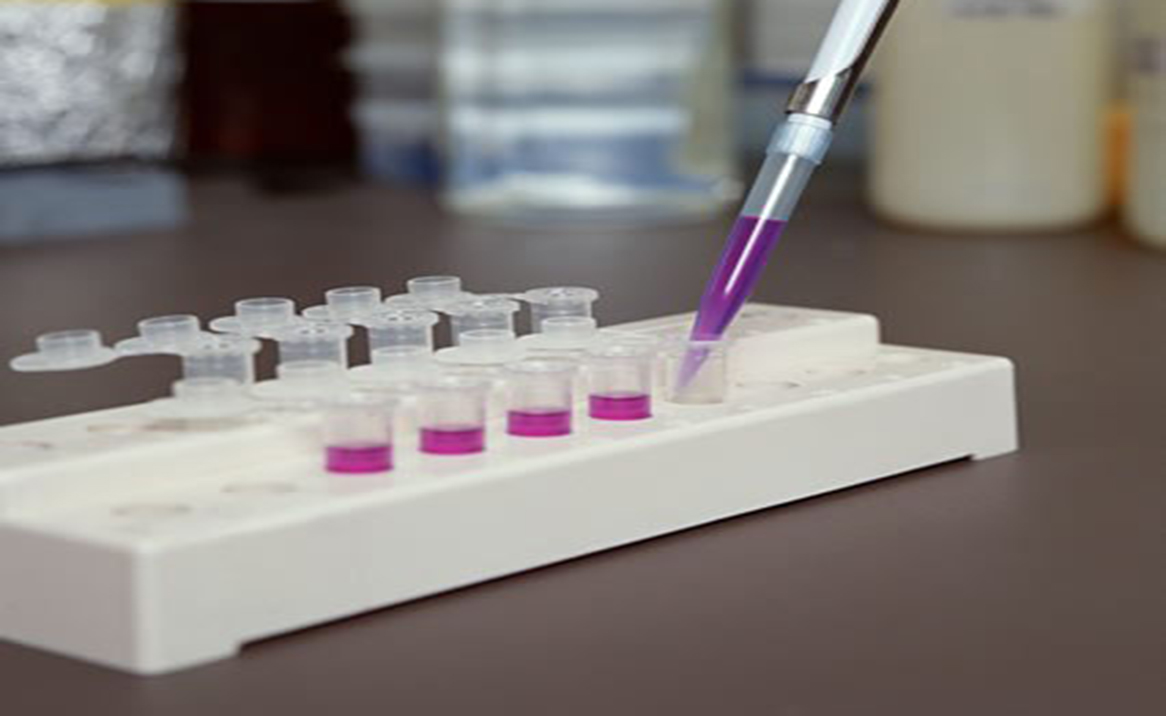阿尔玛蓝试剂盒(~Alarmar Blue Cell Viability Reagent)
Introduction
Cell health can be monitored by numerous methods. Plasma membrane integrity, DNA synthesis, DNA content, enzyme activity, presence of ATP, and cellular reducing conditions are known indicators of cell viability and cell death. AlarmarBlue cell viability reagent functions as a cell health indicator by using the reducing power of living cells to quantitatively measure the proliferation of various human and animal cell lines, bacteria, plant, and fungi allowing you to establish relative cytotoxicity of agents within various chemical classes. When cells are alive they maintain a reducing environment within the cytosol of the cell. Resazurin, the active ingredient of AlarmarBlue reagent, is a non-toxic, cell permeable compound that is blue in color and virtually non-fluorescent. Upon entering cells, resazurin is reduced to resorufin, a compound that is red in color and highly fluorescent. Viable cells continuously convert resazurin to resorufin, increasing the overall fluorescence and color of the media surrounding cells.
AlarmarBlue cell viability reagent is used to assess cell viability by simply adding the 10X, ready-to-use solution to mammalian or bacterial cells in culture media. There is no requirement to aspirate media from cells or place cells in minimal media. Consequently, AlarmarBlue reagent can easily be used in a single tube or microtiter plate format in a “no wash” fashion. Simply add AlarmarBlue reagent as 10% of the sample volume (i.e., add 10 μL AlarmarBlue reagent to 100 μL sample), followed by a 1–4 hours incubation at 37ºC. Longer incubation times may be used for greater sensitivity without compromising cell health. The resulting fluorescence is read on a plate reader or fluorescence spectrophotometer. Alternatively, the absorbance of AlarmarBlue reagent can be read on a spectrophotometer. Finally, results are analyzed by plotting fluorescence intensity (or absorbance) versus compound concentration.
NOTE: Always wear lab coats, gloves and goggles when working with our products although they are low-risk chemicals for R&D only.
Preparing Cells
Mammalian Cells—Adherent: Plate mammalian cells in a cell culture flask or dish, and allow cells to adhere and grow for approximately 4–24 hours at 37°C and 5% CO2 before proceeding with the assay.
Mammalian Cells—Suspension: Plate mammalian cells in a cell culture flask or dish, and use cells immediately for the assay or allow cells to grow for up to 24 hours at 37°C and 5% CO2 before proceeding with the assay.
Bacterial Cells: For details, see references 2 and 3. Notes AlarmarBlue reagent is stable to multiple freeze/thaw cycles and its activity is not affected if the reagent is frozen.
General Guidelines
Cell types assayed with AlarmarBlue reagent include mammalian, bacterial (including biofilms), plant, and fish cells. More specifically AlarmarBlue reagent has been tested on hepatocytes, such as HepG2 cells, as well as cells of primary origin.
Be sure to include appropriate assay controls. To minimize experimental errors, we recommend making measurements from a minimum of 4–8 replicates of experimental and no-cell control samples.
You may need to determine the plating density and incubation time for the AlarmarBlue assay for each cell type and use conditions such that the assay is in the linear range.
If you plan to use longer incubation time (overnight), be sure to maintain sterile conditions during reagent addition and incubation to avoid microbial contaminants. Contaminated cultures will yield erroneous results as microbial contaminants also reduce AlarmarBlue reagent.
Fetal bovine serum (FBS) and bovine serum albumin (BSA) cause some quenching of fluorescence. We recommend using the same serum concentration in controls to account for this quenching. Other media components, such as phenol red do not interfere with the assay.
Protocol
Optional: Treat cells with the test compound 24–72 hours prior to performing the AlarmarBlue cytotoxicity assay.
Add 1/10th volume of AlarmarBlue reagent directly to cells in culture medium.
Incubate for 1 to 4 hours at 37°C in a cell culture incubator, protected from direct light.
Note: Sensitivity of detection increases with longer incubation times. For samples with fewer cells, use longer incubation times of up to 24 hours.
Record results using fluorescence or absorbance as follows:
Fluorescence: Read fluorescence using a fluorescence excitation wavelength of 540–570 nm (peak excitation is 570 nm). Read fluorescence emission at 580–610 nm (peak emission is 585 nm).
Absorbance: Monitor the absorbance of AlarmarBlue at 570 nm, using 600 nm as a reference wavelength (normalized to the 600 nm value).
Note: Fluorescence mode measurements are more sensitive. When fluorescence instrumentation is unavailable, monitor the absorbance of AlarmarBlue reagent. Assay plates or tubes can be wrapped in foil, stored at 4°C, and read within 1–3 days without affecting the fluorescence or absorbance values.
Optional: Add 50 μL 3% SDS directly to 100 μL of cells in AlarmarBlue reagent to stop the reaction.
| Name | 阿尔玛蓝试剂盒(~ Alarmar Blue Cell Viability Reagent) | ||
|---|---|---|---|
| CAT# | 091-100T | CAS# | N/A |
| Storage# | 4°C干燥避光 | Shelf Life# | 12个月 |
| Ex(nm)# | N/A | Em(nm)# | N/A |
| MW# | N/A | Solvent# | N/A |
| Name | 阿尔玛蓝试剂盒(~ Alarmar Blue Cell Viability Reagent) |
|---|---|
| CAT# | 091-100T |
| CAS# | N/A |
| Storage# | 4°C干燥避光 |
| Shelf Life# | 12个月 |
| Ex(nm)# | N/A |
| Em(nm)# | N/A |
| MW# | N/A |
| Solvent# | N/A |


 Specification
Specification Support
Support



